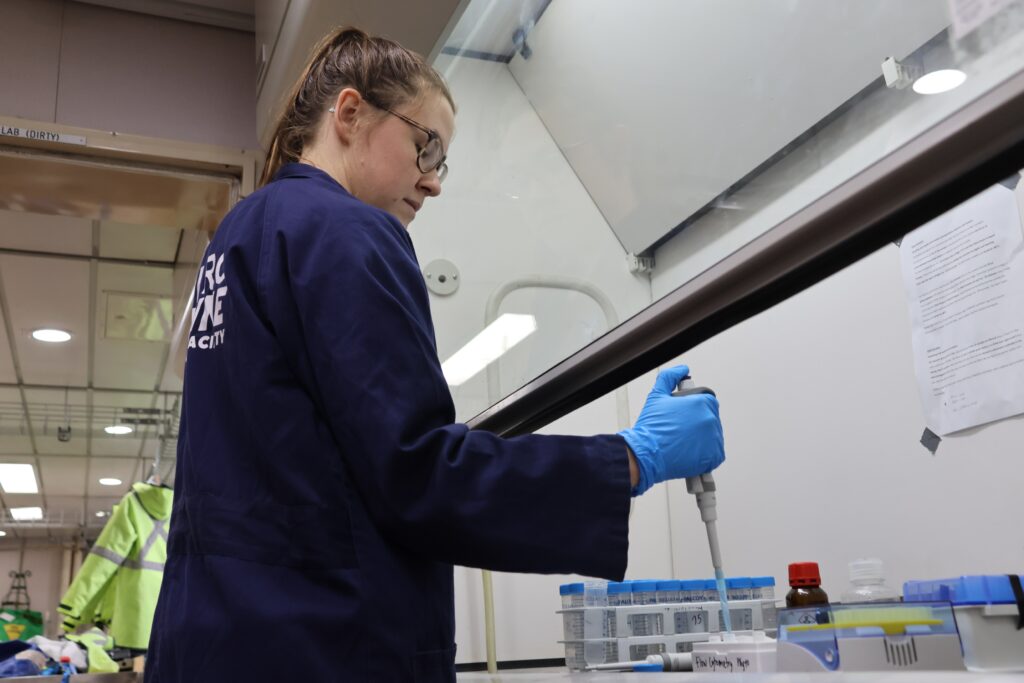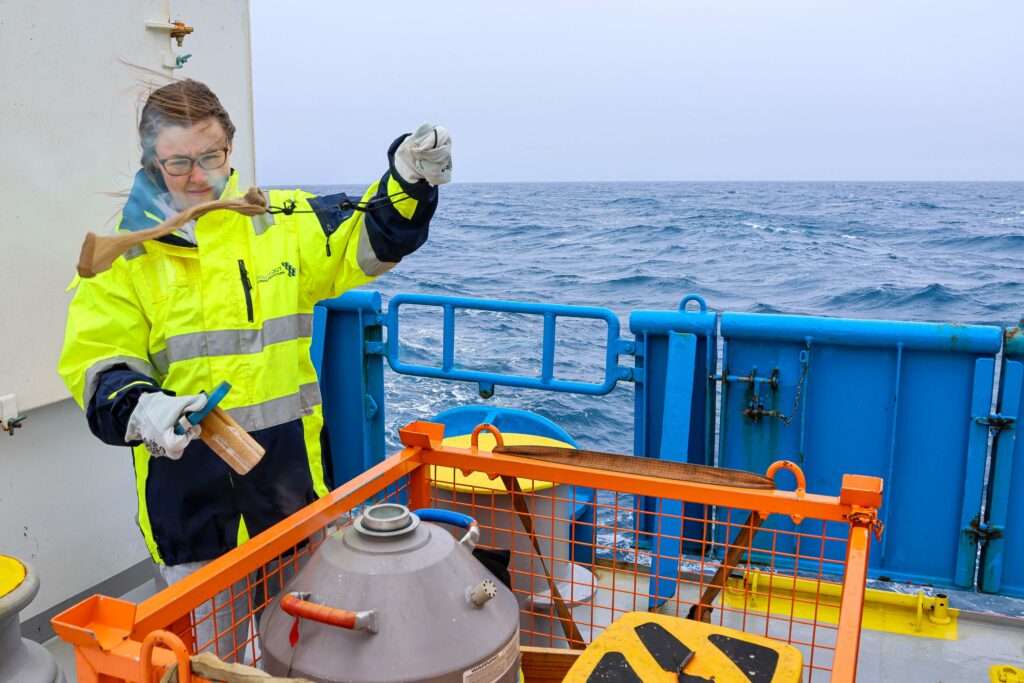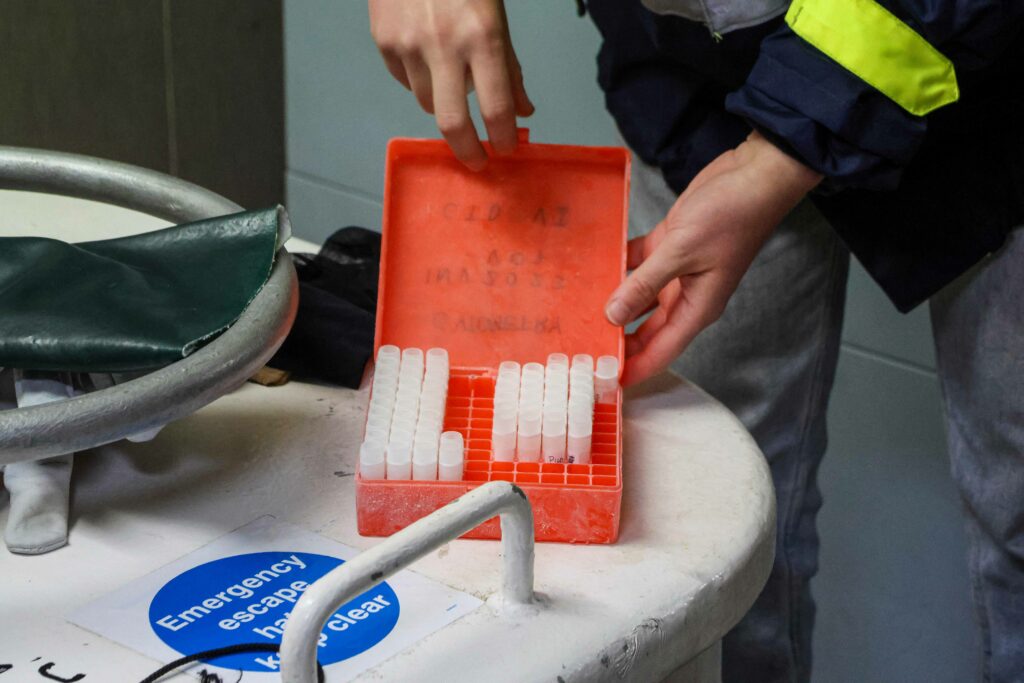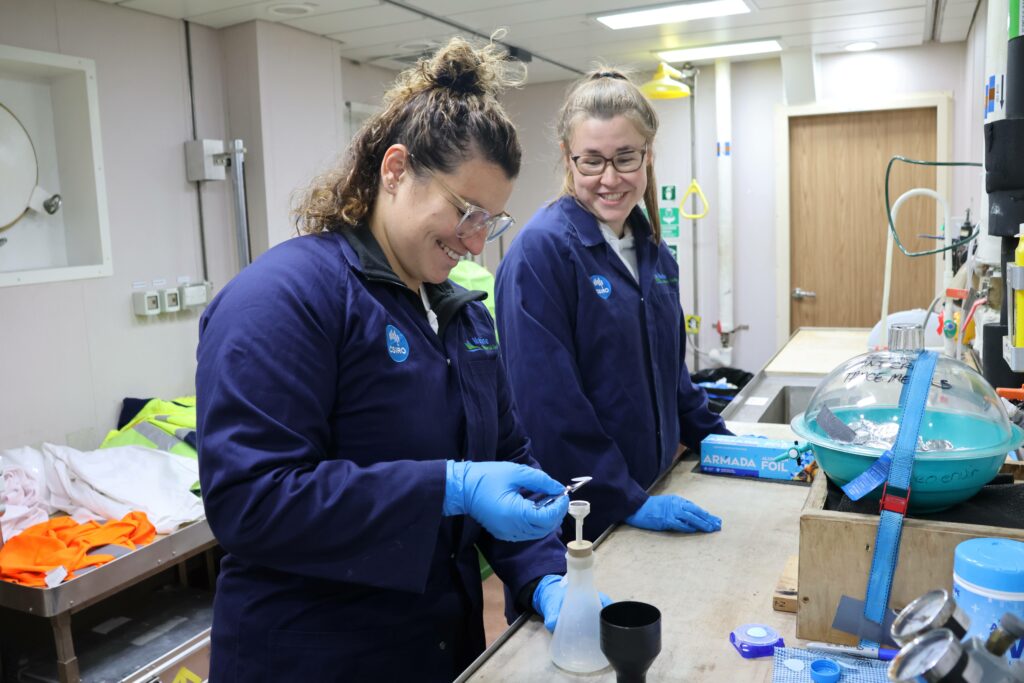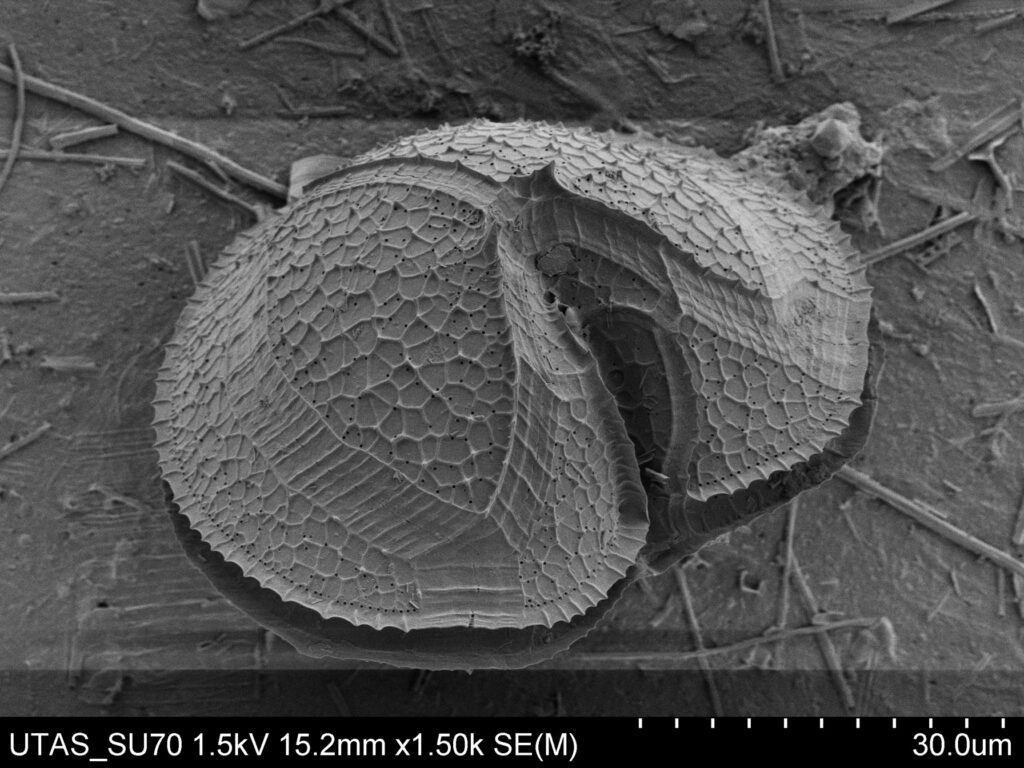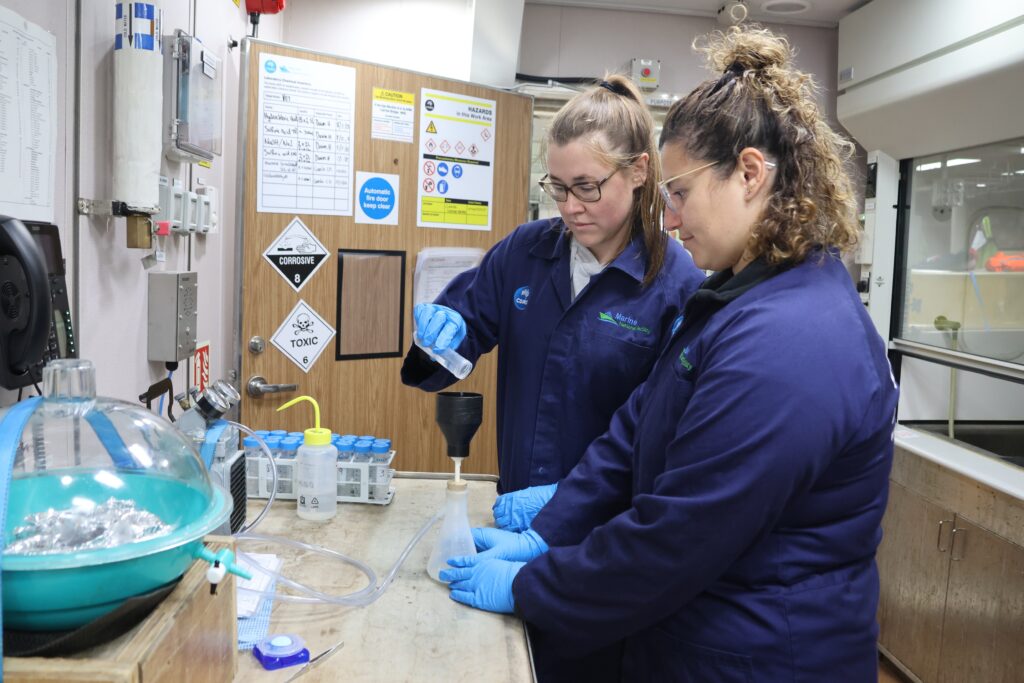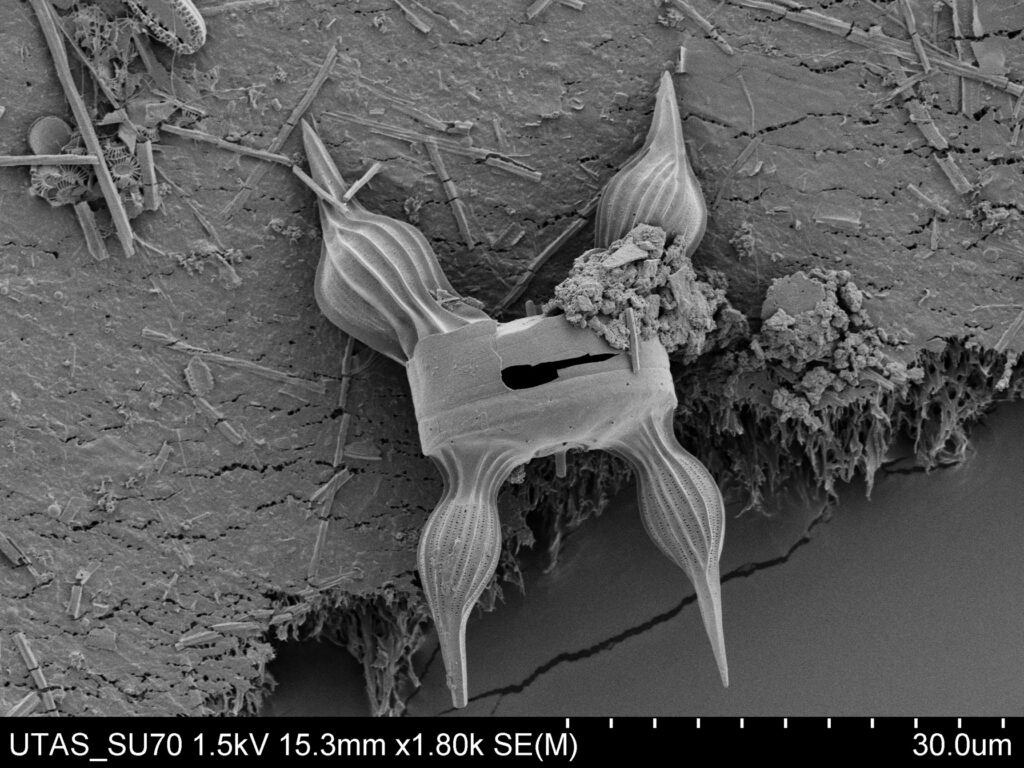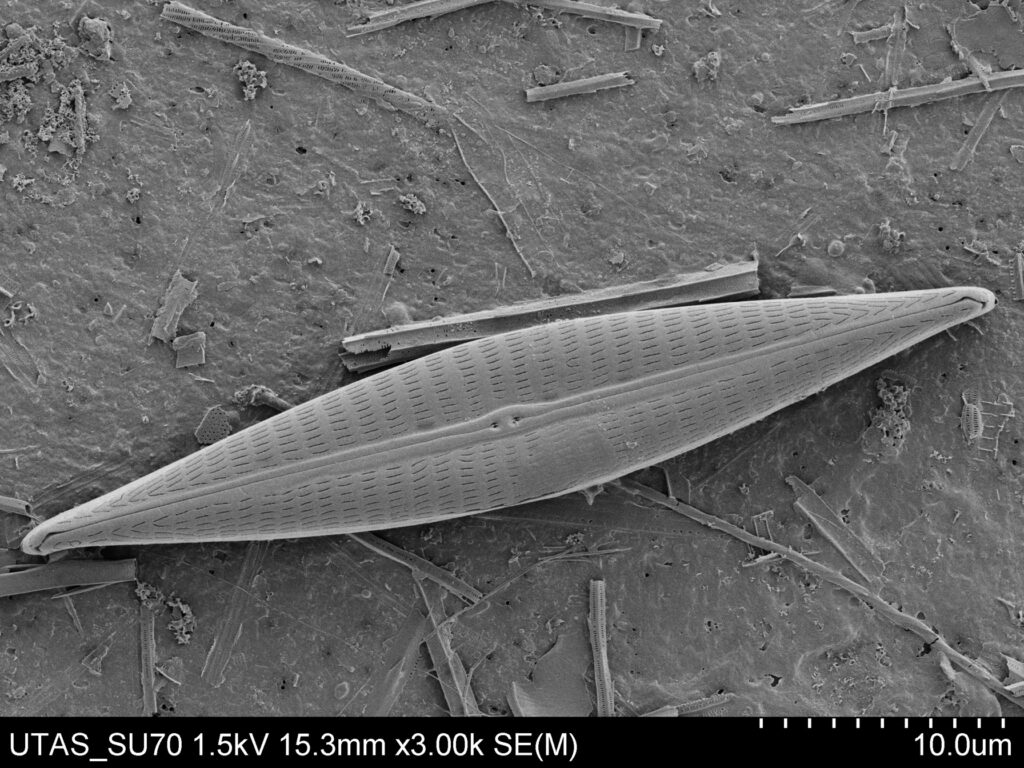Snap-frozen salad from the Southern Ocean
Camila Cataldo Mendez and Paige England, flow cytometry team
In our quest to understand the Southern Ocean, the FOCUS voyage aboard CSIRO research vessel (RV) Investigator is strategically targeting high-energy zones in the Antarctic Circumpolar Current. These swirling eddies in the world’s strongest current play an important role in transporting heat, carbon, oxygen and nutrients across the Southern Ocean and between the surface and the depths.
Under a rapidly changing climate, vital biological processes – those that help organisms thrive – are likely to be impacted. So, while the primary mission of this voyage involves collecting data for physical parameters like temperature and salinity, we are also taking a dive into the biological and ecological side of the Southern Ocean.
We’re taking samples to examine the make-up of phytoplankton communities and how they respond to changes in factors like salinity, temperature, oxygen and current strength. Phytoplankton, which are microscopic marine algae, are the energy super-heroes of the marine food web. These organisms, fuelled by sunlight and nutrients such as nitrogen and phosphorus, not only sustain themselves but form the ‘salad’ portion of the food web, feeding a wide range of sea creatures including jellyfish, krill and fish larvae (that then feed everything else).
Phytoplankton aren’t the only salad ingredient. Bacteria and viruses are an important part of the mix too. They play a lead role in biogeochemical cycles – the cycle of matter between living organisms, the atmosphere, the ocean and Earth’s crust – helping turn organic elements like carbon and nitrogen into dissolved organic matter. This influences the amount of nutrients available for phytoplankton communities.
Throughout the voyage, our team is collecting phytoplankton, bacteria, and virus samples from water captured at different depths by the CTD instrument (bacteria and viruses from nearly 4000 metres depth to the near-surface, phytoplankton from the sun-lit upper 200 metres). We preserve them onboard by snap-freezing in liquid nitrogen, ready for onshore analysis using flow cytometry and scanning electron microscopy (SEM).
Flow cytometry is a technology that uses lasers to count cells floating in a fluid. It enables us to categorise and count phytoplankton, bacteria and virus communities across multiple different sampling stations, providing insights into their abundance and composition. Complementing this, SEM lets us zoom in on the samples and identify individual phytoplankton species. This two-pronged approach gives us a well-rounded understanding of how phytoplankton communities respond to environmental changes and these ever-evolving high energy areas.
By combining the results from the physical parameters with those from our onboard analyses, we hope to find patterns in phytoplankton population dynamics driven by changes in the water column. With this information we will be able to identify phytoplankton hotspots, understand how their communities are changing and what this could mean for the storage of carbon in the Southern Ocean and the food web.
Camila Cataldo Mendez is a PhD student with AAPP at the University of Tasmania. Paige England has just completed her Masters at UTAS.
This research is supported by a grant of sea time on RV Investigator from the CSIRO Marine National Facility which is supported by the Australian Government’s National Collaborative Research Infrastructure Strategy (NCRIS).

